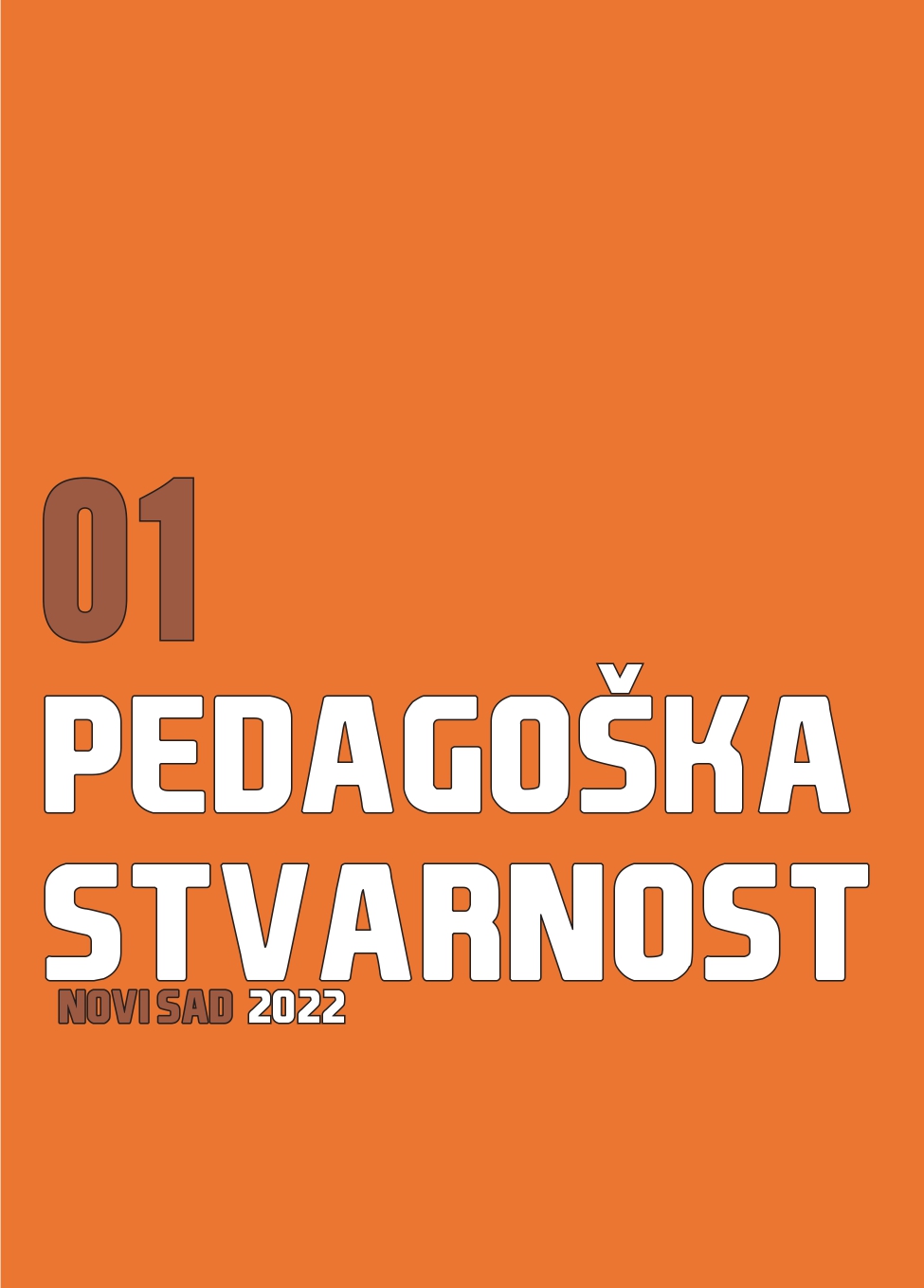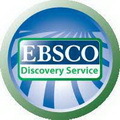STAVOVI UČENIKA O PRIMENI DIGITALNOG KVIZA U NASTAVI BIOLOGIJE U SREDNJOJ ŠKOLI
Originalni naučni rad
Apstrakt
Digitalni kviz je poseban vid digitalnih igara koji je auditivno i vizuelno privlačan učenicima. Kahut (Kahoot!) kviz je jedan od digitalnih kvizova koji se danas široko koristi u obrazovanju. Cilj istraživanja je bio ispitati stavove učenika (N = 83) o primeni Kahut kviza u nastavi biologije u srednjoj školi. Stavovi učenika su analizirani i sa aspekta varijabli: pol, ocena iz biologije (na polugodištu) i ranija iskustva sa digitalnim kvizovima. U istraživanju je primenjen upitnik iz tri dela (I - pitanja koja se odnose na osnovne informacije i podatke o analiziranim varijablama, II - Likertova skala i III - otvoreno pitanje). Obradom prikupljenih podataka zaključeno je da su učenici iskazali pozitivne stavove prema Kahut kvizu, smatraju ga korisnim za utvrđivanje gradiva i većina je izrazila želju da se on primenjuje i u okviru drugih nastavnih predmeta. Nisu utvrđene statistički značajne razlike na nivou cele skale za analizirane varijable. Međutim, statistički značajne razlike su utvrđene za dva iskaza u odnosu na pol, odnosno učenice prijavljuju jači emocionalni doživljaj (kada odgovaraju na pitanja Kahut kviza) od učenika. Takođe, pored sviđanja i zadovoljstva, jedna od izdvojenih tema iz komentara (odgovora na otvoreno pitanje) je uzbuđenost i takmičarski duh. Rezultati ovog istraživanja ukazuju da primena Kahut kviza može povećati angažovanje učenika na časovima biologije, ali treba voditi računa da uzbuđenost ne pređe u stres i frustraciju. Planiraju se dalja istraživanja kako bi se ispitalo da li uvođenje ove inovacije u dužem vremenskom periodu održava motivisanost učenika i da li utiče na njihov uspeh iz biologije.
Reference
Asniza, I. N., Zuraidah, M. O. S., Baharuddin, A. R. M., Zuhair, Z. M., & Nooraıda, Y. (2021). Online game-based learning using Kahoot! to enhance preuniversity students’ active learning: A students’ perception in biology classroom. Jo- urnal of Turkish Science Education, 18(1), 145-160. https://doi.org/10.36681/ tused.2021.57
Azevedo, M. M. R., Vieira, D. D. S. S., Hager, A. X., Vieira, J. C., Vieira, A. C., Sousa, E. T. F., Vieira, L. A., & Pereira, R. J. B. (2021). Kahoot como estratégia lúdica no ensino-aprendizagem da biologia celular [Kahoot as a ludic strategy in the teaching learning of cellular biology]. Research, Society and Development, 10(12), Article e159101219049. https://doi.org/10.33448/rsd-v10i12.19049
Basuki, Y., & Hidayati, Y. N. (2019). Kahoot! or Quizizz: The students’ perspectives. In D. Mulyadi, H. D. Santoso, S. Aimah, & R. Rahim (Eds.), Proceedings of the 3rd English Language and Literature International Conference - ELLIC (pp. 202-210). Semarang: EAI. http://dx.doi.org/10.4108/eai.27-4-2019.2285331
Detyna, M., Stojšić, I., & Dommett, E. J. (2021). Investigating mechanisms to increase student engagement in higher education learning environments: Testing emerging and immersive technologies to meet teaching needs. In M. Stanišić (Ed.), Proceedings of Sinteza 2021 - International Scientific Conference on Information Technology and Data Related Research (pp. 240-246). Belgrade: Singidunum University. https://doi.org/10.15308/Sinteza-2021-240-246
Díaz-Martínez, S. L., & Lizárraga-Celaya, C. (2013). Un acercamiento a un plan de ludificación para un curso de fisica computacional en educación superior [An approach to a gamification plan for a course in computational physics in higher education]. Paper presented at the XIV Encuentro Internacional Virtual Educa Colombia 2013, 17th-21st June 2013, Medellín, Colombia.
Fuster-Guilló, A., Pertegal-Felices, M. L., Jimeno-Morenilla, A., Azorín-López, J., Rico-Soliveres, M. L., & Restrepo-Calle, F. (2019). Evaluating the impact on motivation and academic performance of a game-based learning experience using Kahoot. Frontiers in Psychology, 10, Article 2843. https://doi.org/10.3389/fp- syg.2019.02843
Gliem, J. A., & Gliem, R. R. (2003). Calculating, interpreting, and reporting Cronbach’s alpha reliability coefficient for Likert-type scales. In Proceedings of the 2003 Midwest Research-to-Practice Conference in Adult, Continuing, and Community Education (pp. 82-88). Columbus: Ohio State University.
Guetl, C., Dreher, H., Williams, R. & Maurer, H. (2005). Game-based e-learning applications of e-tester. In P. Kommers & G. Richards (Eds.), Proceedings of ED-MEDIA 2005--World Conference on Educational Multimedia, Hypermedia & Telecommunications (pp. 4912-4917). Waynesville: Association for the Advancement of Computing in Education (AACE).
Jethro, O. O., Grace, A. M., & Thomas, A. K. (2012). E-learning and its effects on teaching and learning in a global age. Indian Journal of Education and Information Management, 1(2), 73-78.
Jones, E. M., Harden, S., Rassias, M., & Abourashchi, N. (2018). Use of quizzes in large statistical lectures: Student perception. In M. A. Sorto, A. White, & L. Guyot (Eds.), Proceedings of the 10th International Conference on Teaching Statistics - ICOTS10. Voorburg: International Statistical Institute.
Jones, S. M., Katyal, P., Xie, X., Nicolas, M. P., Leung, E. M., Noland, D. M., & Montclare, J. K. (2019). A ‘Kahoot!’ approach: The effectiveness of game-based learning for an advanced placement biology class. Simulation & Gaming, 50(6), 832-847. https://doi.org/10.1177/1046878119882048
Kaur, P., & Naderajan, R. (2019). Kahoot! in the English language classroom. South East Asia Journal of Contemporary Business, Economics and Law, 20(6), 49-54. http://seajbel.com/wp-content/uploads/2019/12/KLICELS14_45.pdf
Korkmaz, S., Öz, H. (2021). Using Kahoot to improve reading comprehension of English as a foreign language learners. International Online Journal of Education and Teaching (IOJET), 8(2). 1138-1150.
Lennon, J., & Maurer, H. (2003). Why it is difficult to introduce e-learning into schools and some new solutions. Journal of Universal Computer Science, 9(10), 1244- 1257. https://doi.org/10.3217/jucs-009-10-1244
Licorish, S. A., George, J. L., Owen, H. E., & Daniel, B. (2017). “Go Kahoot!” enriching classroom engagement, motivation and learning experience with games. In W. Chen, J.-C. Yang, A. F. Mohd Ayub, S. L. Wong, & A. Mitrovic (Eds.), Proceedings of the 25th International Conference on Computers in Education - ICCE 2017 (pp. 755-764). Taoyuan City: Asia-Pacific Society for Computers in Education.
Licorish, S. A., Owen, H. E., Daniel, B., & George, J. L. (2018). Students’ perceptions of Kahoot!’s influence on teaching and learning. Research and Practise in Technology Enhanced Learning, 13, Article 9. https://doi.org/10.1186/s41039- 018-0078-8
Mahon, P., Lyng, C., Crotty, Y., & Farren, M. (2018). Transforming classroom questioning using emerging technology. British Journal of Nursing, 27(7), 389-394. https://doi.org/10.12968/bjon.2018.27.7.389
Mamlok-Naaman, R. (2011). How can we motivate high school students to study science? Science Education International, 22(1), 5-17.
Martínez-Molina, S., Bueno, L., Ferrer, A. M., Ripoll, A., & Ródenas Rigla, F. (2018). Evaluating new technologies and education gamification in high education: The case of Kahoot!. In F. J. Garrigós Simón, S. Estellés Miguel, I. Lengua Lengua, J. O. Montesa, C. M. Dema Pérez, J. V. Oltra Gutiérrez, Y. Narangajavana, & M. J. Verdecho Sáez (Eds.), Proceedings of the 18th International Conference on Innovation, Documentation and Education – INNODOCT 2018 (pp. 175-184). València: Editorial Universitat Politècnica de València. http://dx.doi. org/10.4995/INN2018.2018.8861
Plump, C. M., & LaRosa, J. (2017). Using Kahoot! in the classroom to create engagement and active learning: A game-based technology solution for ele- earning novices. Management Teaching Review, 2(2), 151-158. https://doi. org/10.1177/2379298116689783
Prensky, M. (2001). Digital natives, digital immigrants (part 1). On the Horizon, 9(5), 1-6. https://doi.org/10.1108/10748120110424816
Prensky, M. (2003). Digital game-based learning. Computers in Entertainment,1(1)https://doi.org/10.1145/950566.950596
Ristić, M. R. i Mandić, D. P. (2018). Spremnost obrazovnog sistema za mobilno učenje. Sociološki pregled, 52(3), 1044-1071. https://doi.org/10.5937/socpreg52-18707
Wang, A. I. (2015). The wear out effect of a game-based student response system. Computers & Education, 82, 217-227. https://doi.org/10.1016/j.compedu.2014.11.004
Wang, A. I., & Lieberoth, A. (2016). The effect of points and audio on concentration, engagement, enjoyment, learning, motivation, and classroom dynamics using Kahoot!. In T. Connolly & L. Boyle (Eds.), Proceedings of the 10th European Conference on Games Based Learning - ECGBL 2016 (pp. 738-746). Sonning Common: Academic Conferences and Publishing International.
Wang, A. I., & Tahir, R. (2020). The effect of using Kahoot! for learning – a literature review. Computers & Education, 149, Article 103818. https://doi.org/10.1016/j. compedu.2020.103818
Yaman, D., & Covington, M. (2007). Using game shows as an instructional tool. eLearn, 2007(9), Article 2. https://doi.org/10.1145/1331947.1331951
Yapıcı, İ. Ü., & Karakoyun, F. (2017). Gamification in biology teaching: A sample of Kahoot application. Turkish Online Journal of Qualitative Inquiry, 8(4), 396-414. https://doi.org/10.17569/tojqi.335956
Zhang, Q., & Yu, Z. (2021). A literature review on the influence of Kahoot! on learning outcomes, interaction, and collaboration. Education and Information Technolo- gies, 26(4), 4507-4535. https://doi.org/10.1007/s10639-021-10459-6







